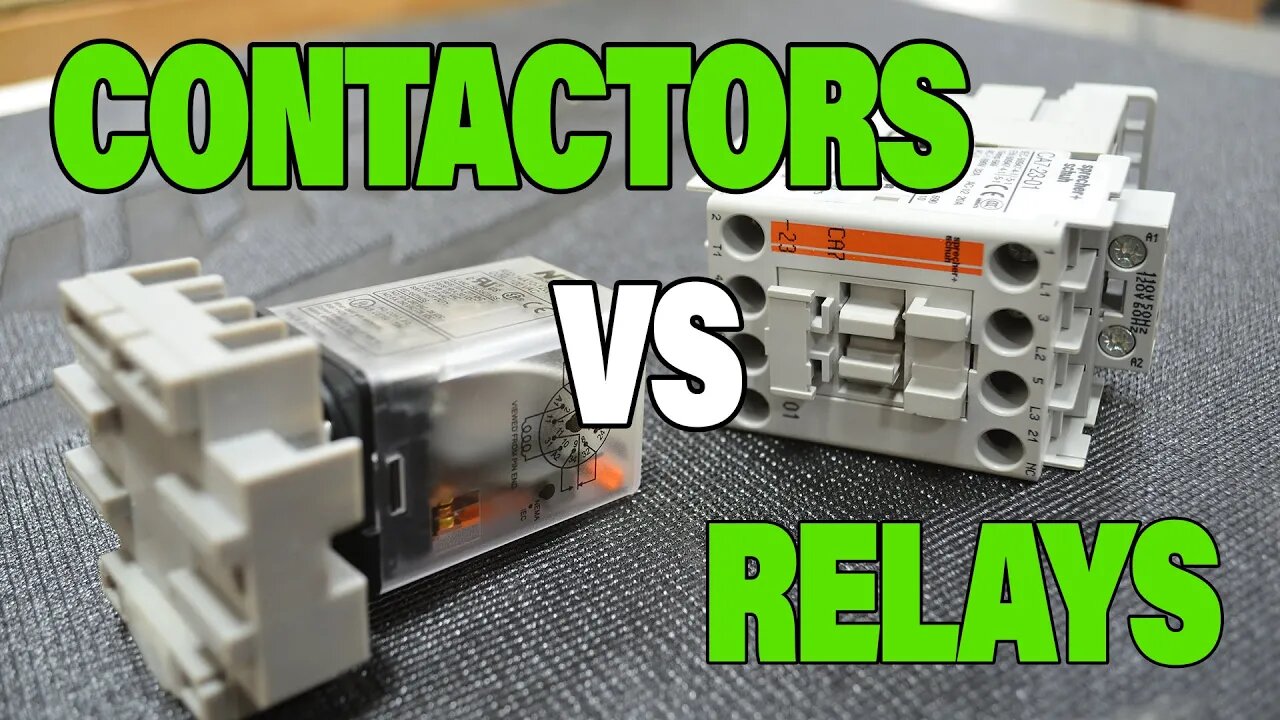Premium Only Content

The Difference Between Contactors And Relays - ELECTROMAGNETIC SWITCHES electricians use
A lot of people get really confused by contactors and relays and tend to treat them like some kind of mystical magic device without understanding what exactly they do. They have some similarities but still have very distinct differences.
00:00 Intro
00:27 How Are They Similar?
01:33 How Do They Differ?
04:22 Outro
👾🤖PRACTICE EXAMS🤖👾
https://www.electricianu.com/practice-exams
😎👕MERCH👕😎
https://www.electricianu.com/merchandise
📲👥SOCIALS👥📲
Instagram - https://www.instagram.com/electrician_u
Discord - https://discord.gg/7ykYfbh
Facebook Page - https://www.facebook.com/theelectricianu
Facebook Group - https://bit.ly/2tz7eQh
TikTok - https://www.tiktok.com/@electricianu
Contactors and relays are simply switches. They differ from a standard switch, however, by being able to be controlled with electrical current rather than your finger. Both operate with a coil on the inside that, when energized, sucks contacts closed or snaps them open. It would be as if you were able to zap a normal light switch with a bolt of lightning to get it to change states....kind of.
Both relays and contactors are also multi-pole switches. This means that they can control several circuits, rather than just one like a normal single-pole switch would do. A typical 8-pin cube relay can control 2 circuits, while an 11-pin can control 3. General-use contactors can control anywhere from 2-4 whereas lighting contactors can control from 6-12 circuits/loads. All with the flip of a single action (bump of current).
What makes them different are a few things. First off, relays are typically lower voltage applications as well as lower-current applications. Relays you may come across could have coil voltages of anywhere between 12v and 240v on average, and can control loads in the 5-15amp range. Contactors tend to be more stout and can handle higher amperage through the coils and contacts. You could see coil voltage ratings between 120v-480v, and contacts around 30-50amps on average.
CONTINUE READING FULL ARTICLE AT: https://www.electricianu.com/podcast/episode-28-the-difference-between-contactors-and-relays-electromagnetic-switches
#contactors #relays #electrical
--
Subscribe - https://www.youtube.com/c/electricianu?sub_confirmation=1
IF YOU ENJOY THESE VIDEOS PLEASE SUBSCRIBE AND "LIKE" THEM ABOVE. ALSO CHECK OUT THE ELECTRICIAN U PODCAST ON ITUNES AND SPOTIFY!!
-
 6:27
6:27
Electrician U
1 year ago💡 Watts vs Lumens: The New Lighting Standard You Need to Know! 💡
7.45K6 -
 23:48
23:48
Jasmin Laine
17 hours ago“We Reject Demographic Change”—Carney’s Comment BLOWS UP as Poilievre Drops the Hammer
11.4K19 -
 LIVE
LIVE
BEK TV
23 hours agoTrent Loos in the Morning 7/23/2025
195 watching -
 12:48
12:48
Degenerate Jay
15 hours ago $0.81 earnedUbisoft Hates Game Preservation
15.6K5 -
 9:33
9:33
The Art of Improvement
21 hours ago $1.50 earnedHow to Bounce Back from Hard Times
17.9K4 -
 4:53
4:53
The Official Steve Harvey
1 day ago $0.77 earnedNo Such Thing as Luck — Just God’s Grace
16.9K3 -
 6:16
6:16
GBGunsRumble
20 hours agoGBGuns @ Alabama Arsenal Czech Weapons CSV-9
13.5K -
 9:06
9:06
MattMorseTV
1 day ago $13.51 earnedTrump wants to END THE FED.
66.6K108 -
 2:05:18
2:05:18
MG Show
20 hours agoBreaking: Ukrainian Whistleblower Letter to DNI Gabbard Exposes Biden Corruption
23.5K19 -
 LIVE
LIVE
Biscotti-B23
3 hours ago $2.14 earned🔴 LIVE SEASON 12 🔥 TAMAKI AMAJIKI IS INSANE & NEW ENDEAVOR QUIRK SET 💥 MY HERO ULTRA RUMBLE
152 watching